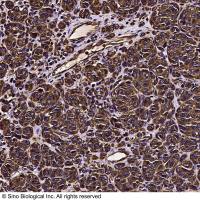Metal Affinity Protein Partitioning
互联网
互联网
相关产品推荐

Recombinant-Arabidopsis-thaliana-Metal-tolerance-protein-C4MTPC4Metal tolerance protein C4; AtMTPc4 Alternative name(s): AtMTP7
¥12838

Coronavirus Nucleocapsid重组蛋白|Recombinant SARS-CoV-2 Nucleocapsid-AVI&His recombinant Protein,Biotinylated
¥4520

Vimentin Antibody, Rabbit PAb, Antigen Affinity Purified | Vimentin 兔多抗 (抗原亲和纯化)
¥1699

Recombinant-Oryza-sativa-subsp-japonica-Metal-tolerance-protein-1MTP1Metal tolerance protein 1; OsMTP1
¥12502

Recombinant-Oryza-sativa-subsp-japonica-Metal-tolerance-protein-5MTP5Metal tolerance protein 5; OsMTP5
¥12474
相关问答

